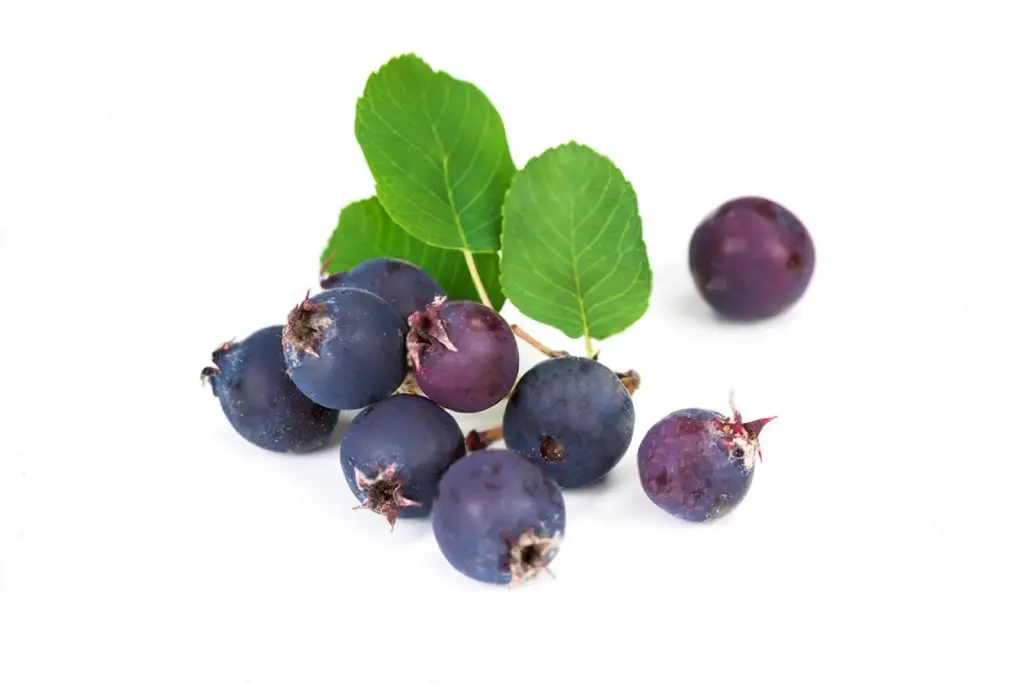
Loquats are delicious fruits with a sweet and tangy flavor. They are small, round or pear-shaped, and have a yellow to orange skin when ripe. Loquats are often enjoyed fresh, but if you have an abundant harvest or want to enjoy them even when they are out of season, freezing is a great option. Freezing loquats allows you to preserve their taste and texture, ensuring you can enjoy their unique flavor throughout the year. In this article, we will provide a step-by-step guide on how to freeze loquats to maintain their optimal quality.
Follow these steps to freeze loquats:
Step 1: Select ripe loquats
To begin the process of freezing loquats, it is important to choose fruits that are fully ripe yet still firm. Selecting the right loquats will ensure that they freeze well and maintain their taste and texture after thawing.
When selecting loquats, pay attention to their appearance. Look for fruits that have a vibrant color, usually ranging from yellow to orange, depending on the variety. Avoid choosing loquats with dull or faded colors, as this may indicate that they are not at their peak ripeness.
Inspect the surface of the loquats for any blemishes, bruises, or signs of spoilage. It is crucial to pick fruits that are free from any damage, as these imperfections can affect the quality of the frozen loquats.
To determine if a loquat is ripe, gently press it with your fingers. Ripe loquats will have a slight give and a soft texture when pressed. However, they should still maintain their overall firmness. Avoid selecting loquats that are too soft or mushy, as they may not freeze well and could become overly mushy when thawed.
Remember, freezing is a great way to preserve the freshness of loquats, allowing you to enjoy their delicious flavor throughout the year. Properly selecting ripe loquats sets the foundation for a successful freezing process, resulting in frozen fruits that are bursting with flavor when you’re ready to enjoy them.
Can loquats be frozen without any preparation?
Loquats can be frozen without any preparation, but it is generally recommended to take some preparation steps for better results. Freezing loquats without preparation may result in a loss of texture and flavor. To enhance their quality, it is advisable to wash the loquats, remove the seeds, and consider cutting them into smaller pieces before freezing.
Can I freeze loquats in their natural form, or do they need to be cut into smaller pieces?
Loquats can be frozen in their natural form or cut into smaller pieces, depending on personal preference and intended use. Freezing whole loquats preserves their original appearance, but it may take longer to thaw and use them in recipes. Cutting them into smaller pieces before freezing can make them more convenient to use and thaw more quickly.
Step 2: Wash and remove the seeds
After selecting ripe loquats, the next step is to ensure that they are clean and free from any dirt or debris. Washing the loquats is important to maintain their hygiene and prevent any contaminants from affecting their taste or quality.
To wash the loquats, place them under cool running water. Gently rub the surface of each fruit with your fingers to remove any dirt, dust, or residues that may be present. Make sure to thoroughly rinse all sides of the loquats.
Once the loquats are clean, it is necessary to remove the seeds before freezing them. Loquats have large seeds located at the center of the fruit, and these seeds are not desirable for consumption or freezing.
To remove the seeds, take a sharp knife and carefully cut each loquat in half lengthwise. You will see the seeds nestled in the center of the fruit. Use the tip of the knife or your fingers to gently pry out the seeds and discard them. Alternatively, you can scoop out the seeds using a spoon or a melon baller.
Removing the seeds is essential because they can affect the texture and taste of the frozen loquats. The seeds can become hard and unpleasantly chewy when frozen, so it is best to eliminate them before proceeding with the freezing process.
Step 3: Prepare a syrup (optional)
Freezing loquats in syrup is an optional step that can help maintain their texture and enhance their natural sweetness. If you prefer a slightly sweeter and juicier result, preparing a simple syrup is a great way to achieve that.
To make a simple syrup, you will need equal parts of sugar and water. In a saucepan, combine the sugar and water, and place it over medium heat. Stir the mixture continuously until the sugar completely dissolves. This gentle boiling process helps to incorporate the sugar into the water, creating a sweet syrup.
The purpose of the syrup is to provide a protective coating to the loquats during the freezing process. It helps to prevent freezer burn and maintain the fruit’s texture and flavor. The sugar in the syrup also acts as a natural preservative, enhancing the overall shelf life of the frozen loquats.
After the sugar has dissolved completely, remove the saucepan from heat and allow the syrup to cool. It’s important to let it reach room temperature before using it to freeze the loquats. This ensures that the hot syrup doesn’t cause any heat shock to the fruits, which could potentially affect their quality.
It’s worth noting that using a syrup is optional. If you prefer to freeze the loquats without syrup, you can skip this step and proceed with the freezing process using just the cleaned and seedless loquats.
Preparing a syrup is a personal preference, and it can add an extra touch of sweetness and juiciness to the frozen loquats. However, if you prefer a more natural taste, you can opt to freeze the loquats without syrup.
Step 4: Pack the loquats
Once you have prepared the loquats and, optionally, the syrup, it’s time to pack them for freezing. Proper packaging is essential to protect the loquats from freezer burn and maintain their quality during storage.
If you prefer to freeze the loquats without syrup, you can place the loquat halves or whole loquats directly into a freezer-safe container or an airtight freezer bag. Ensure that the container or bag is specifically designed for freezer storage to prevent moisture loss and freezer burn.
For those who opted to freeze the loquats in syrup, gently pour the cooled syrup over the loquats in the container or bag. Leave some headspace, usually about an inch or two, to allow for expansion as the loquats freeze. This headspace accommodates the expansion of liquid during the freezing process, preventing the container or bag from bursting.
When placing the loquats in the container or bag, try to arrange them in a single layer if possible. This helps promote even freezing and makes it easier to retrieve individual loquats when needed.
It’s important to seal the container or bag tightly to prevent air and moisture from entering, which can lead to freezer burn. If using a bag, gently squeeze out any excess air before sealing. If using a container, ensure that the lid is securely fastened.
Proper packaging not only preserves the taste and texture of the loquats but also helps to extend their shelf life in the freezer. The airtight packaging prevents freezer odors from affecting the loquats and keeps them separate from other foods in the freezer.
Can I freeze loquats in a glass container?
Yes, you can freeze loquats in a glass container, but it’s important to choose a glass container specifically designed for freezing. Look for containers that are labeled as freezer-safe or suitable for freezing. Glass containers should have enough headspace to accommodate expansion during freezing and a tight-fitting lid to prevent air exposure and freezer burn.
Step 5: Seal and label the containers
After packing the loquats for freezing, it is essential to seal the containers or bags tightly. This step ensures that no air or moisture can enter the packaging, which helps to preserve the quality of the loquats during their time in the freezer.
When sealing containers, make sure the lids or covers are securely fastened. Check for any gaps or loose areas and adjust as necessary to create a tight seal. This helps to prevent freezer burn, maintain the loquats’ texture and flavor, and protect them from potential contamination.
If using freezer bags, press out as much air as possible before sealing. Squeezing out excess air reduces the chance of freezer burn and helps to maintain the overall quality of the loquats.
Labeling the containers or bags is another important step. Use a waterproof marker or labels to clearly indicate the date of freezing. This allows you to keep track of how long the loquats have been stored in the freezer and ensures you can use them within a reasonable timeframe.
Labeling with the freezing date is particularly useful because it helps you prioritize the consumption of the loquats. As time passes, you can easily identify the older batches and ensure they are used before newer ones. This way, you can maintain the freshness and quality of the loquats while enjoying them at their best.
Proper sealing and labeling of the containers or bags contribute to effective freezer organization and help prevent any confusion or wastage of frozen loquats. It allows you to have better control over your frozen inventory and ensures you can enjoy the loquats in a timely manner.
Step 6: Freeze the loquats
Once the loquats are properly sealed and labeled, it’s time to transfer them to the freezer for freezing. Proper freezing ensures that the loquats retain their quality, taste, and texture until you’re ready to enjoy them.
When placing the sealed containers or bags in the freezer, it’s important to arrange them in a single layer, if possible. This allows for better airflow and promotes quicker and more even freezing of the loquats. Placing them in a single layer helps to prevent the fruits from sticking together and forming clumps.
Avoid stacking the containers or bags on top of each other until the loquats are fully frozen. Stacking them prematurely can lead to uneven freezing and potential damage to the fruits. It’s best to give them enough space for the cold air to circulate around each package, ensuring uniform freezing.
Maintaining proper spacing and organization also makes it easier to access individual containers or bags without disturbing the others. This way, you can conveniently retrieve the desired quantity of frozen loquats without having to thaw the entire batch.
Freezing loquats in a single layer and avoiding premature stacking helps to maintain the quality and integrity of the fruits during the freezing process. It allows the loquats to freeze quickly and evenly, preserving their taste, texture, and nutritional value.
Do I need to flash-freeze loquats before freezing?
Flash-freezing loquats before freezing is not necessary, but it can help preserve their texture and prevent them from sticking together. To flash-freeze, spread the loquats in a single layer on a baking sheet and place them in the freezer for about an hour until they are firm. This method ensures that the loquats freeze quickly, reducing the formation of large ice crystals and maintaining their individual integrity.
Step 7: Store in the freezer
After the loquats are completely frozen, you can proceed to store them in your freezer for long-term preservation. Proper storage ensures that the frozen loquats maintain their quality and remain in good condition until you’re ready to use them.
Once the loquats are frozen solid, you can stack the containers or bags to optimize the use of space in your freezer. Stacking them allows you to efficiently utilize the available freezer capacity and helps to keep your freezer organized. However, it’s important to exercise caution and ensure that the containers or bags are securely stacked to prevent them from toppling over.
When choosing a designated spot for storing the frozen loquats, consider a location where they won’t be easily disturbed. Avoid placing them near the front of the freezer where they may be subjected to frequent temperature fluctuations when the freezer door is opened. Instead, choose a spot towards the back or on a stable shelf where the temperature remains consistently cold.
It’s important to note that maintaining a constant freezing temperature is crucial for preserving the quality of the loquats. Freezers should be set to 0°F (-18°C) or below to ensure the long-term preservation of the frozen fruits.
Proper storage practices contribute to maintaining the optimal quality of the frozen loquats, allowing you to enjoy them at their best for an extended period. By following this step, you can confidently store the frozen loquats in your freezer, knowing that they will remain in excellent condition until you’re ready to thaw and savor their deliciousness.
How long can frozen loquats be stored?
Frozen loquats can be stored for up to 8 to 12 months in a freezer that maintains a consistently low temperature (ideally below 0°F or -18°C). Proper storage is essential to maintain their quality over time. It is recommended to use airtight containers or freezer bags to prevent freezer burn and moisture loss. Labeling the containers with the date of freezing can help keep track of their storage duration.
Other related questions
How do I properly defrost loquats?
To defrost loquats, transfer them from the freezer to the refrigerator and allow them to thaw slowly overnight or for about 8-12 hours. This gradual thawing process helps retain their texture and flavor. Avoid using a microwave or running them under hot water, as this can result in a mushy consistency. Once thawed, the loquats can be enjoyed as a snack, used in recipes, or blended into smoothies.
Can I refreeze previously thawed loquats?
It is generally not recommended to refreeze previously thawed loquats. Once loquats have been thawed, their texture and quality may be compromised, and refreezing can further deteriorate their taste and consistency. The process of thawing and refreezing can also promote bacterial growth, potentially affecting the safety of the fruit. It’s best to consume or use the thawed loquats promptly rather than refreezing them.
How do I know if my frozen loquats have gone bad?
There are a few signs to look out for to determine if your frozen loquats have gone bad. Firstly, if you notice any discoloration, such as browning or darkening of the fruit, it could be an indication of spoilage. Secondly, if the texture of the thawed loquats is excessively mushy or slimy, it’s a sign that they have deteriorated. Lastly, if there is an off-putting or sour odor coming from the frozen loquats, it suggests that they are no longer suitable for consumption. If any of these signs are present, it’s best to discard the loquats to avoid any potential health risks.
Can I use frozen loquats with the fresh ones?
Yes, you can use frozen loquats alongside fresh ones in certain recipes. When using frozen loquats, keep in mind that they will have a softer texture compared to fresh ones. They work well in dishes like smoothies, sauces, jams, and baked goods where the texture change won’t significantly affect the final outcome. However, if the recipe requires the loquats to retain their firmness or crispness, it’s best to stick to using fresh loquats.
Can frozen loquats be used for making jams or preserves?
Yes, frozen loquats can be used for making jams or preserves. Freezing helps to break down the cell walls of the fruit, making it easier to extract the juice and achieve a desired consistency for jams or preserves. However, it’s important to note that frozen loquats may release more liquid during the cooking process, so adjusting the recipe accordingly may be necessary to achieve the desired thickness.








